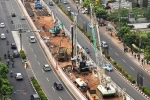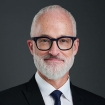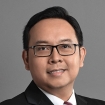This article has been translated by PwC Indonesia as part of our Indonesia Infrastructure News Service. PwC Indonesia has not checked the accuracy of, and accepts no responsibility for the content.
Investor Daily - Pacu konektivitas, trayek tol laut tumbuh 11% per tahun
20 May 2024
By Ichan Amin
Jakarta, ID – The Transportation Ministry is accommodating directives from President Joko Widodo (Jokowi) on developing transportation infrastructure. During his 10 years in office, the ministry has been implementing numerous sustainable transportation projects.
The projects include the construction of various infrastructure, such as airports, ports, and railway stations.
Transportation Minister Budi Karya Sumadi said that construction in the transportation sector was on the rise.
Overall, the construction efforts include expanding and modernising type A terminals, developing airports and ports to handle larger volumes, and updating the mass transportation system with electric buses, MRT, LRT, and high-speed railways.
“Over the past 10 years, there has been a series of construction efforts in the urban sector across Indonesia. Overall, these efforts have significantly increased, especially in the maritime sector, followed by the railway, airport, and ferry sectors,” Budi Karya said at the Public Discussion on One Decade of Transportation Infrastructure Development in Jakarta recently.
Furthermore, the Transportation Minister explained that, in the land transportation sector, there were 85 ferry port developments, 65 ferry pier construction projects, 12 ferry port construction projects, and the implementation of urban mass transportation systems in six metropolitan cities.
In the railway sector, 10,709 kilometres of tracks have been constructed and 58 railway stations have been built or modernised. Additionally, there have been significant developments of LRT, MRT, the Whoosh high-speed railway, the Trans-Sulawesi railway, and pioneer train services.
Meanwhile, in the sea transportation sector, there are 39 maritime highway routes and 51 port facility development and rehabilitation projects. In the air transportation sector, the Transportation Ministry has established 41 air bridge routes and constructed 26 new airports.
Regarding connectivity, Transportation Minister Budi Karya explained that, in the last 10 years, maritime highway connectivity and pioneer transportation have been continuously established. Currently, the maritime highway has 191 routes with a growth of 11% annually.
The total volume of outgoing containers is 84,609 tonnes with returning containers totalling 26,362 tonnes. Meanwhile, the volume of outgoing non-container cargo is 540,403 TEUs and returning non-container cargo is 27,551 TEUs.
Over the past 10 years, pioneer ship transportation routes have reached a total of 1,070, growing at a rate of 3% annually. The number of passengers has reached 5,901,027 with an annual growth of 13%. Meanwhile, the total cargo volume has reached 1,058,759.
Meanwhile, regarding pioneer air transportation, there are 2,828 passenger routes, 278 cargo routes, and 10 air cargo routes. In pioneer railway transportation, there are 9 trains with passengers increasing each year.
“We are actively developing pioneer air transportation, which is progressing rapidly. Additionally, we are also expanding pioneer railway transportation for urban citizens. New railway routes are being established in Surabaya, Semarang, Bandung, and Medan. This means that railways will not only connect islands, but agglomeration is also important,” the Transportation Minister said.
Need to reach other regions
Transportation Minister Budi Karya added that his ministry hoped that transportation infrastructure development could be continued to benefit the people. According to him, this real step can be taken through the Whoosh high-speed railway, MRT, and LRT.
“We are undertaking extensive development projects. The President has directed that transportation infrastructure should directly benefit the people,” he explained.
Meanwhile, an academician from Unika Soegijapranata in Semarang, Djoko Setijowarno, said that the transportation sector has been massively developing in the last decade. However, he emphasised the need to extend these developments to more regions across Indonesia.
“It is not just about physical construction but also ensuring sustainability. Without considering who will operate these facilities or their potential benefits, these efforts could be wasteful,” he stated.
According to Djoko, sustainable transportation infrastructure development must have a long-term impact. He emphasised that the transportation sector should be recognised as a necessity. “In developed countries, vital sectors like transportation are not focused on profit. Instead, they are subsidised to improve the quality of life for citizens,” he revealed.
Therefore, Djoko added that balanced transportation development was not only supported by facilities and infrastructure. However, it must also be supported by direct subsidies from the central government or local regional governments.
“For example, transportation in Papua is underdeveloped, but we must focus on it, such as by providing buses if roads are available. If not, the tariff must be subsidised,” Djoko added.
Transportation authority
Meanwhile, Indonesia Transportation Society (MTI) Chairperson Tory Damantoro stated that aligning the development of the transportation sector with both the central government and regional governments should be overseen by a transportation authority. For example, Tory noted that the long-term development of a Greater Jakarta MRT would require coordination between central and regional government authorities.
“There is has to be higher authority with a transportation authority overseeing all modes of transportation,” Tory revealed.
According to him, a transportation authority is necessary in metropolitan areas to connect main areas with buffer zones, which requires a stronger central oversight.
“Various forms of support are needed. For instance, for MRT, access roads to transportation nodes and feeder services such as buses can be provided, similar to what Jakarta Regional Government has implemented through JakLingko,” he added.
Next article: Logistics flow - New hope from Batu Ampar


















